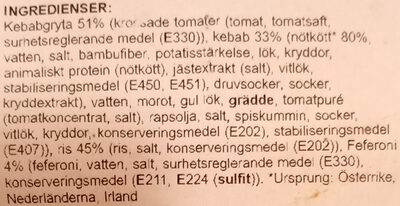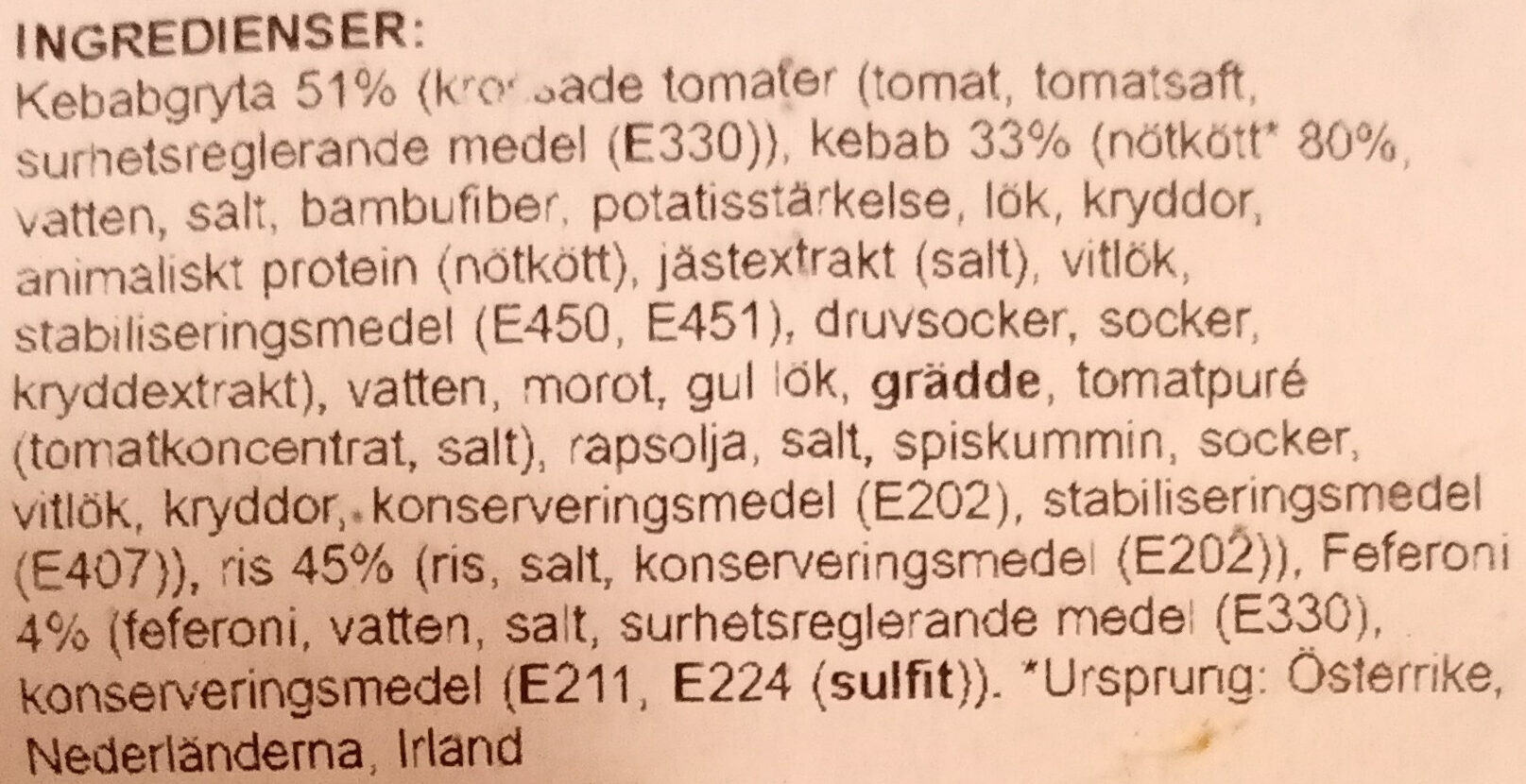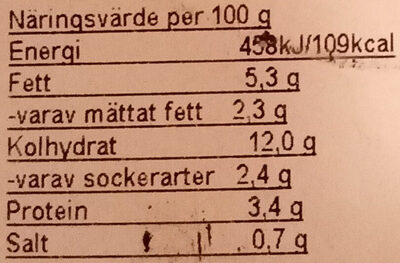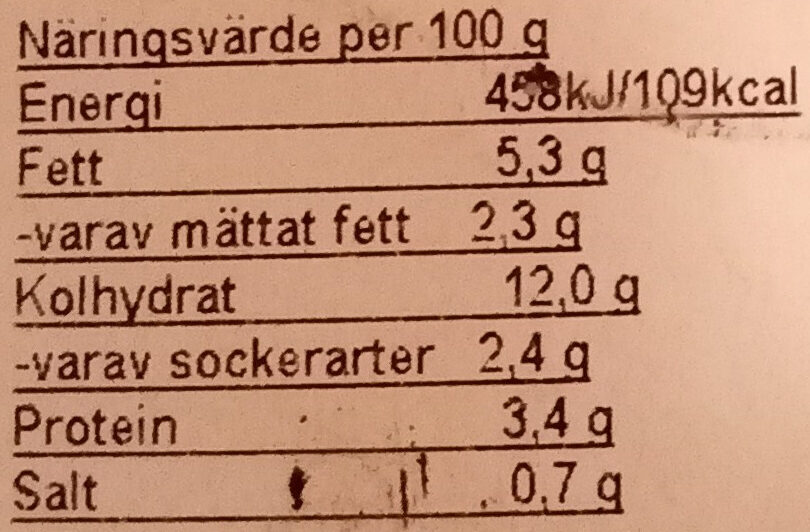Schysst käk - Klassisk Kebabgryta! - 410 g
Barcode: 7350090451415 (EAN / EAN-13)
Quantity: 410 g
Packaging: Plastic, Pp-polypropylene
Brands: Schysst käk
Categories: Meats and their products, Meals, Meals with meat, Rice dishes, Beef dishes, Refrigerated foods, Microwave meals, Refrigerated meals
Origin of the product and/or its ingredients: Ursprung nötkött: Österrike, Nederländerna, Irland.
Origin of ingredients: Austria, Ireland, Netherlands
Manufacturing or processing places: Sverige
Traceability code: SE 6493 EC
Link to the product page on the official site of the producer: https://schysstkak.se/kebabtallrik/klass...
Stores: ICA Supermarket
Countries where sold: Sweden
Matching with your preferences
Report a problem
Data sources
Product added on by olofolleola4
Last edit of product page on by olofolleola4.
Product page also edited by openfoodfacts-contributors.












